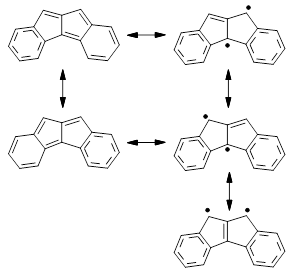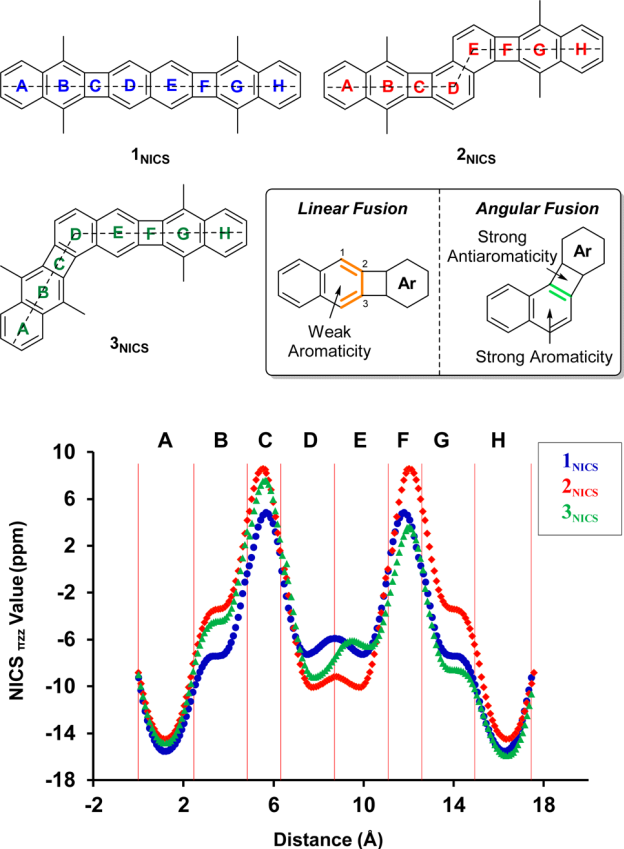Suzanne McAnanama-Brereton and Mark P. Waller (2018)
Highlighted by Jan Jensen
For this application the three "players" are 1) the complexity or computational cost of the method, 2) the accuracy of the method for a benchmark set, and 3) the similarities of the system of interest with the molecules in the benchmark set.
Scores for each player are entered into a payoff matrix and then fed to the Gambit program that computes the Nash equilibria, which are then converted into a score for each combination of functional and basis set. The method, called Decider, is made available as via a web-interface.
The method is for the benzene dimerization energy using the S22 benchmark set (where the benzene dimer has been removed). The top 81 functional/basis set combinations are given and the top five, middle five, and bottom five combinations are tested, i.e. the benzene dimerization energy is computed and compared to the reference value. As expected, the top five combinations are among both the fastest and most accurate of the 15 combinations tested.
Because the molecules in the benchmark set are all quite small, Decider invariably suggested the def2-QZVP basis because it affordable for these kinds of systems and provides accurate results (in fact this happens for every molecule pair I have tried to far).
As far as I can tell the version available via the web interface is based on the S22 benchmark, so it can only be used for interaction energies at present. Every molecule I have tried to far has led to def2-QZVP as the only basis set suggestion.Unfortunately, it doesn't appear that the source code is available. The source code is available on Github.
The authors have also set up a Turing test of the method.

This work is licensed under a Creative Commons Attribution 4.0 International License.
Highlighted by Jan Jensen
Copyright 2018 American Chemical Society
This paper describes a method for finding the optimum combination of DFT functional and basis set for a particular calculation by using game theory, more specifically by finding the corresponding Nash equilibria. As the authors write:
A Nash equilibrium (NE) is an optimal strategy in game theory, given that all players have differing payoffs for different strategies. It is a strategy that, when all players have full knowledge of their own and their opponents’ payoffs for each strategy, every rational player will choose.
For this application the three "players" are 1) the complexity or computational cost of the method, 2) the accuracy of the method for a benchmark set, and 3) the similarities of the system of interest with the molecules in the benchmark set.
Scores for each player are entered into a payoff matrix and then fed to the Gambit program that computes the Nash equilibria, which are then converted into a score for each combination of functional and basis set. The method, called Decider, is made available as via a web-interface.
The method is for the benzene dimerization energy using the S22 benchmark set (where the benzene dimer has been removed). The top 81 functional/basis set combinations are given and the top five, middle five, and bottom five combinations are tested, i.e. the benzene dimerization energy is computed and compared to the reference value. As expected, the top five combinations are among both the fastest and most accurate of the 15 combinations tested.
Because the molecules in the benchmark set are all quite small, Decider invariably suggested the def2-QZVP basis because it affordable for these kinds of systems and provides accurate results (in fact this happens for every molecule pair I have tried to far).
As far as I can tell the version available via the web interface is based on the S22 benchmark, so it can only be used for interaction energies at present. Every molecule I have tried to far has led to def2-QZVP as the only basis set suggestion.
The authors have also set up a Turing test of the method.

This work is licensed under a Creative Commons Attribution 4.0 International License.






